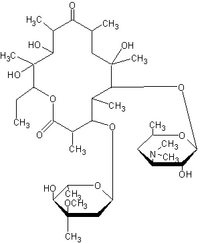VIENNA, Va. -- Acumen Solutions, Inc., a leading business and technology consulting firm with offices in Vienna, Virginia and New York City, has announced the acquisition of San Francisco-based Opcentric, a global leader in Sales Optimization consulting.
"The Opcentric team brings with them tremendous experience in sales processes, training, executive metrics & analysis, and CRM adoption. Adding those resources to the Acumen Solutions arsenal will enable us to strengthen our services across the board and specifically enhance our CRM practice," explained Acumen Solutions President and CEO, David Joubran.
Commenting on the announcement, Salesforce.com President Jim Steele stated, "Acumen Solutions has already worked with Opcentric on two of the largest Salesforce.com implementations to date, making them one of our most trusted partners. As they formally combine their forces, they become a key partner that can deploy successfully on a national scale. We look forward to continuing our work with them."
With established offices in the Northeast corridor, Acumen Solutions will now leverage the new west coast locations to expand to a national footprint. Opcentric founder Eryc Branham, former VP of Consulting at Saleforce.com, remarked, "We are extremely excited about the prospect of bringing a more extensive solution set to our customers with the ability to integrate Acumen Solutions' business and IT service offering competencies. Additionally, through Acumen Solutions' vertical industry capabilities in media/communications and financial services, we will be able to take our Sales Optimization services to new markets."
Eryc Branham will manage the new Acumen Solutions San Francisco office and lead Sales Optimization operations on the West Coast.
About Acumen Solutions(R)
Right from the Start(R). Acumen Solutions, Inc., a privately held company based in Vienna, Va., is a leading business and technology consulting firm that uses a focused, results-oriented approach to develop client-specific solutions. Our blend of industry expertise, business insight and technology savvy makes us the premier choice to help organizations gain a competitive advantage. With a focus in communications and media, financial services and government solutions, our clients include members of the Fortune 500 and other emergent industry leaders. For more information, visit www.acumensolutions.com.
About Opcentric
Find Win Book Retain(TM). As the global authority in Sales Optimization, Opcentric builds practical, proven solutions that drive top-line revenue growth and sales efficiencies that help contain costs. We deliver world-class Sales Optimization solutions including training, research, consulting and operations management to customers ranging from Fortune 500 to mid-market leaders. Our world-class staff possesses deep expertise and talent in sales operations, sales management, global sales execution, CRM technology implementation & adoption, channel & alliance strategies, marketing, and services sales & marketing. For more information, please visit our website at www.opcentric.com.
COPYRIGHT 2005 Business Wire
COPYRIGHT 2005 Gale Group



